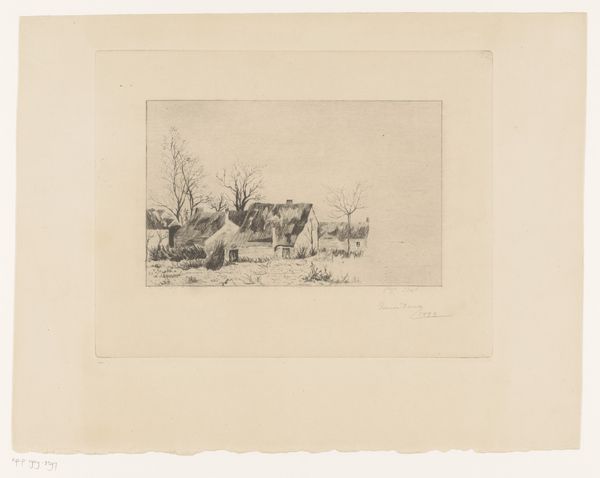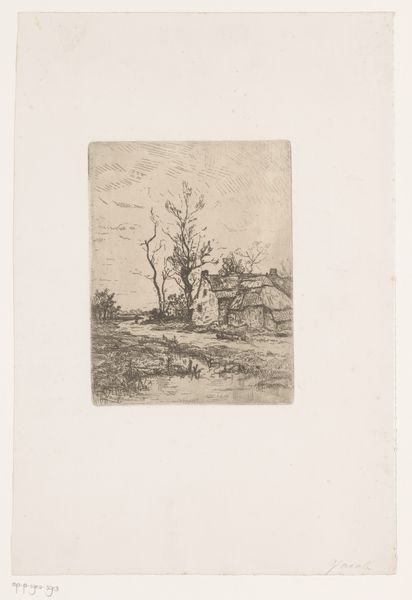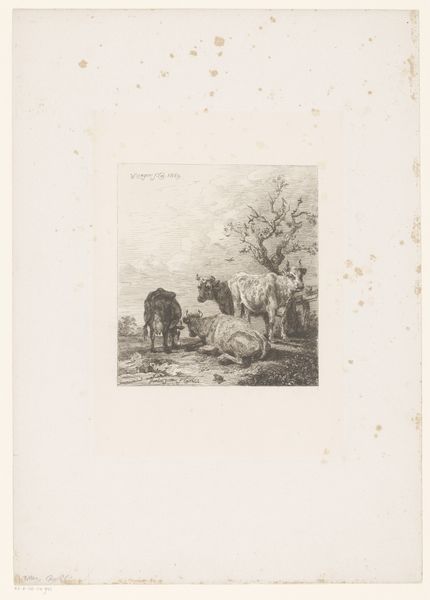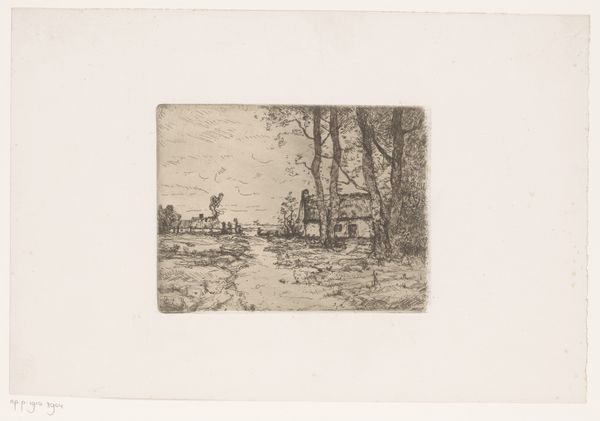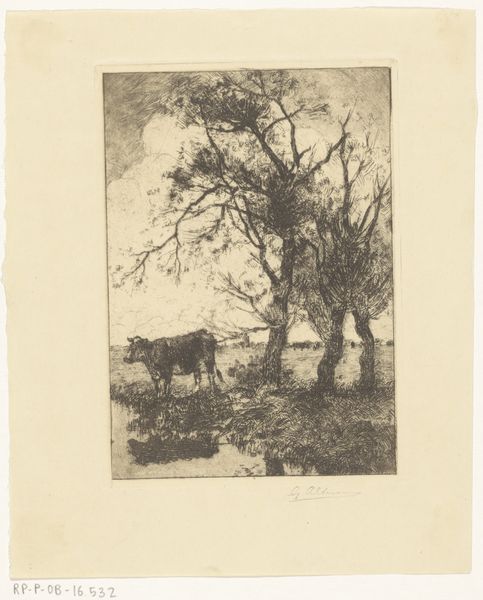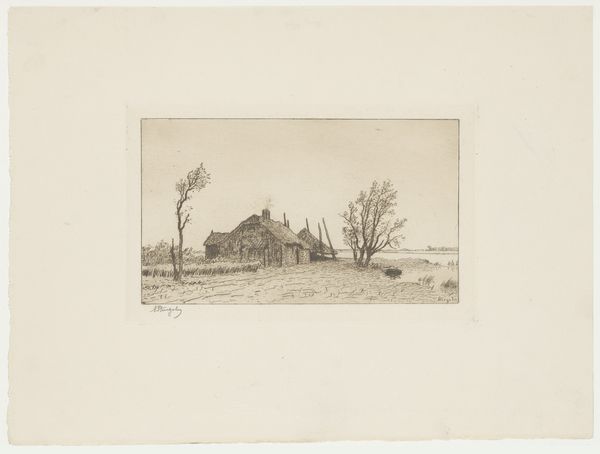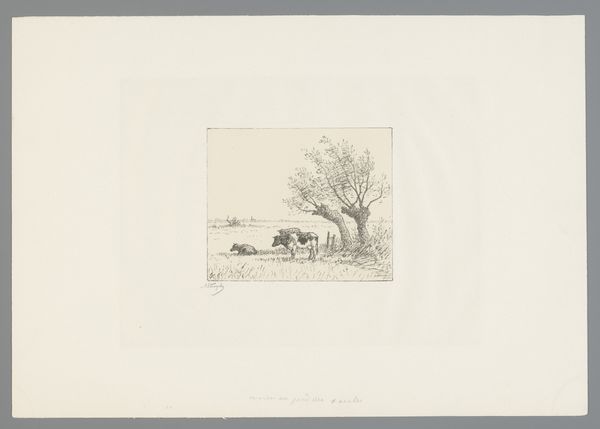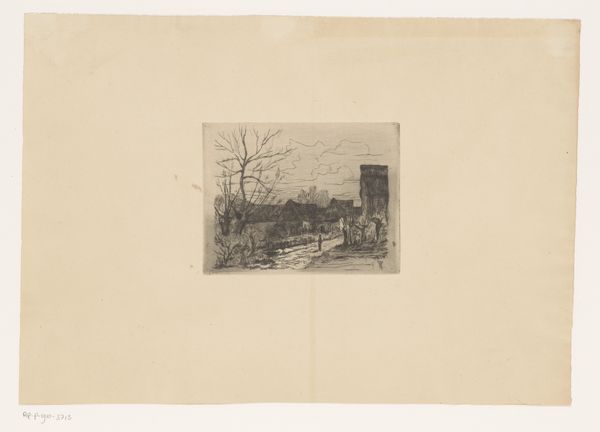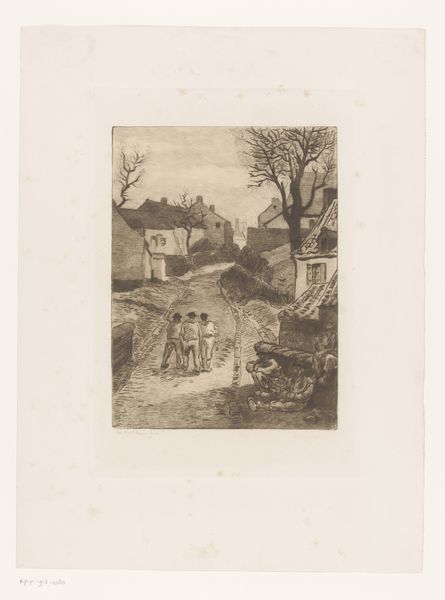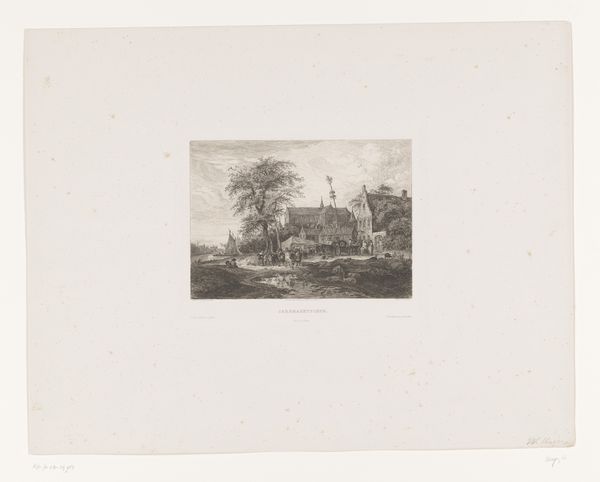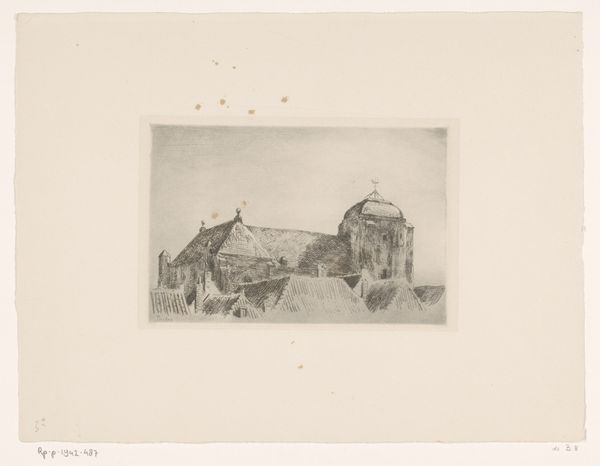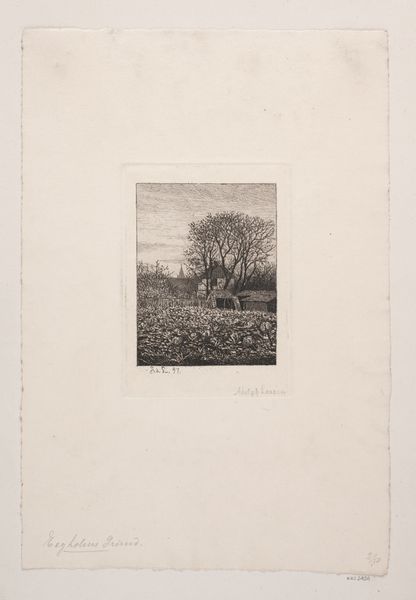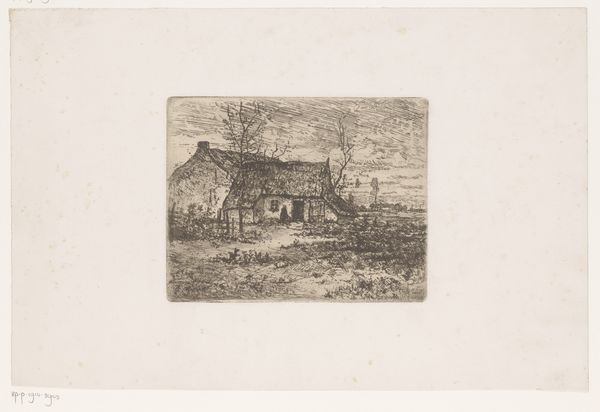
drawing, print, etching, paper
#
drawing
# print
#
etching
#
landscape
#
paper
#
realism
#
monochrome
Dimensions: height 239 mm, width 223 mm
Copyright: Rijks Museum: Open Domain
Curator: Right in front of us we have "Landschap met boerderijen," or "Landscape with Farms," an etching on paper. Its creation is attributed to the period between 1877 and 1909, a fascinating slice of artistic production at the turn of the century. Editor: It feels like a very lonely place, doesn't it? Stark, barren trees. The scene seems to lack joy. Curator: As an etching, its process speaks to reproducibility, disseminating images beyond unique painted objects, impacting how landscape imagery could circulate amongst various social classes. Also, note the paper choice; its quality influences the ink absorption and the overall texture. How do you feel about that compositional choice? Editor: Thinking about landscape representations during that period, especially depictions of rural life, it's hard not to consider the social and political realities of farmers. There was significant upheaval. It brings forth a complex understanding of the art, rather than only viewing a pastoral image. Curator: The scale, a smaller, more intimate print, makes me consider how it might have been displayed – a domestic setting perhaps? How the owners relate to that representation of the agrarian life is key. Editor: Absolutely. These farmhouses, seemingly isolated, could be a reflection of the economic isolation many rural communities felt at that time. And look, those barren trees-- Curator: They almost look dead... which may imply a subtle critique of industrialization encroaching on rural life, disturbing cycles of labor and life. Editor: That somber monochrome tone emphasizes that sense of melancholy but it's fascinating how this simple image encapsulates so many layers. The landscape isn’t just scenery, but also loaded with issues of the period. Curator: Well said! Ultimately, this work leaves us pondering not just a place, but a relationship – between people, land, and process. Editor: I appreciate how contextualizing these images reframes our experience to reflect the reality that this is art meant to generate conversations about material circumstances of art's making.
Comments
No comments
Be the first to comment and join the conversation on the ultimate creative platform.
